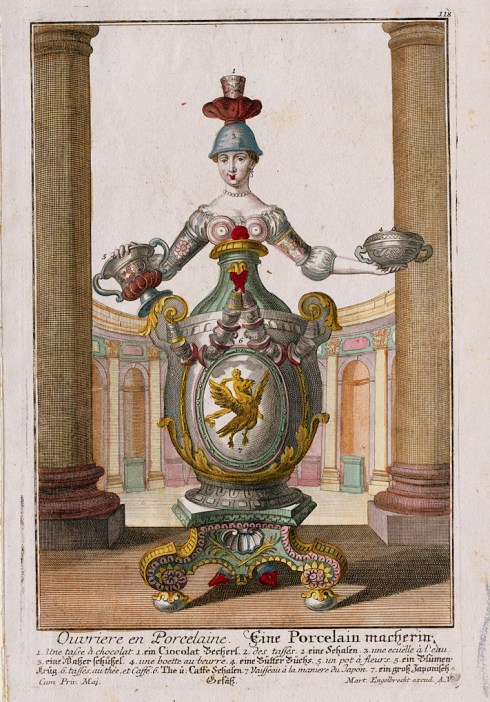I have a real romance author as a neighbor, so I am venturing into this territory with some trepidation, but as Valentine’s Day quickly approaches I want to shift the focus from snow, snow, snow, which is all we are talking about here. In Salem, the perennial romance that is dragged out nearly every year for this occasion is that of Nathaniel and Sophia Hawthorne, which I find boring, boring, boring. It’s been done to death, like so many Salem stories, because it is easy: they both came from conspicuous families and were great diarists, she painted some charming scenes, he was so very handsome. If I were going to pen a Salem romance, which I am not (I am not creative enough for fiction, which this post will verify) I would write the love story of Philip English and Mary Hollingsworth. Now I have no idea if these two people were actually in love (they come from a different time and are not so “open” as Nathaniel and Sophia) but their intertwined lives would sure make for a good story!
Actually, I don’t know why there is not more scholarly work on Philip English, whose life is intertwined not only with Mary but with two of the seminal events of the seventeenth century: the English Civil War and the Salem Witch Trials. He’s the perfect “transatlantic man”, with one foot on either side of the ocean: born on the English Channel island of Jersey to a very connected family in 1651, the very same year the Royalist Carteret family, including his godfather Sir Philip De Carteret (III), surrendered the island to Parliamentary forces. Philip d’Anglois grew up in the midst of a network of merchants, fishermen, and smugglers who had several North American ties–and after the Restoration, his Carteret connections would no doubt come in useful too. He emigrated to Salem by 1670, became Philip English, and immediately commenced making his fortune, no doubt using both his old Jersey and Royalist connections and the new ones forged in New England, most notably through his marriage (in 1675) to Mary Hollingsworth, the only daughter of wealthy merchant and tavern-keeper William Hollingsworth and his wife Eleanor. There followed: the death of William (lost at sea!) and a likely considerable inheritance for Mary and Philip, the construction of a stately, much commented-upon, mansion house in the east end of Salem, seven children, the acquisition of a fleet of over 20 ships, a wharf, and considerable real estate on the harbor, and in 1692, accusations of witchcraft brought forward first against Mary and then Philip. After brief bouts of imprisonment and the confiscation of their considerable property, they fled to New York, where they apparently lived in splendor, and returned home to extract their revenge after the hysteria was over. But it was too late for Mary, who died soon after her return to Salem, aged 42.


A 1680 map of the Channel Islands by Thomas Philips, British Museum; The English “Great House” in Salem, built between 1683-90 at the corner of Essex and present-day English Streets: later it was known as the “40 Peaked House”. The Reverend William Bentley records visiting in 1791, and observes that “the rooms are the largest in Town [and]….even the Cellars are plastered.” Image from Ralph Paine, The Ships and Sailors of Old Salem: the Record of a Brilliant Era of American Achievement (1912).
How would I romanticize these biographical facts? I would play up both Philip’s and Mary’s early years, his life in Jersey and at sea and her domestic life. I think I could turn him into a pirate pretty easily, and the Peabody Essex Museum has a sampler of hers, which would provide me with the opportunity to engage in a dreamy, internal narrative. Once he arrives in Salem, their courtship would obviously provide lots of romantic opportunities, and I would emphasize their cultural clash and his exotic “otherness” both before and after their marriage: he was “French” and Protestant, but not quite Protestant enough for Puritan Salem, which doubtless contributed to his accusation in 1692. Seven children! That has to point to some sort of attachment. He goes away, and comes back, away and back. She was first accused of witchcraft (there were rumors about her mother, who ran the family’s Blue Anchor Tavern, which I could certainly exploit in a work of fiction), he comes to her rescue, then he is accused, and they escape to New York: lots of room for embellishment in this course of events. And shortly after their triumphant return to Salem, Mary dies–either from the treatment she received in prison and the difficulties of life on the run, or tuberculosis, or complications stemming from her last childbirth. A tragic romance (and I think I’ll leave out his second marriage and the possibility of at least one illegitimate child).



I’m really taking liberties here, but this is fiction! This couple is NOT Philip and Mary, but rather the marriage portrait of an “unknown couple” by John Souch, painted c. 1640 (© Grovesnor Museum): I want my Englishes to look slightly more “worldly” than the typical late seventeenth-century Salem couple, but this couple is probably too “English”. This is not the English “Great House” either, but rather the seventeenth-century “Keeping Room” at the American Museum in Bath. Ann Rinaldi’s A Break with Charity (1992), is told from the perspective of Susanna English, Philip’s and Mary’s daughter.
Like this:
Like Loading...
 Salem Gazette, February 14, 1823.
Salem Gazette, February 14, 1823.
 Salem Observer, January 29, 1848 and Salem Register, February 9, 1849.
Salem Observer, January 29, 1848 and Salem Register, February 9, 1849.

















 Bibliothèque nationale de France, Département des manuscrits, Français 24399
Bibliothèque nationale de France, Département des manuscrits, Français 24399





![René_d'Anjou_Le_livre_du_[...]_btv1b60005361](https://i0.wp.com/streetsofsalem.com/wp-content/uploads/2018/02/renc3a9_danjou_le_livre_du_-_btv1b60005361.jpg?resize=490%2C454&ssl=1) He awakes, and immediately writes down his dream. …which is all
He awakes, and immediately writes down his dream. …which is all 








































































